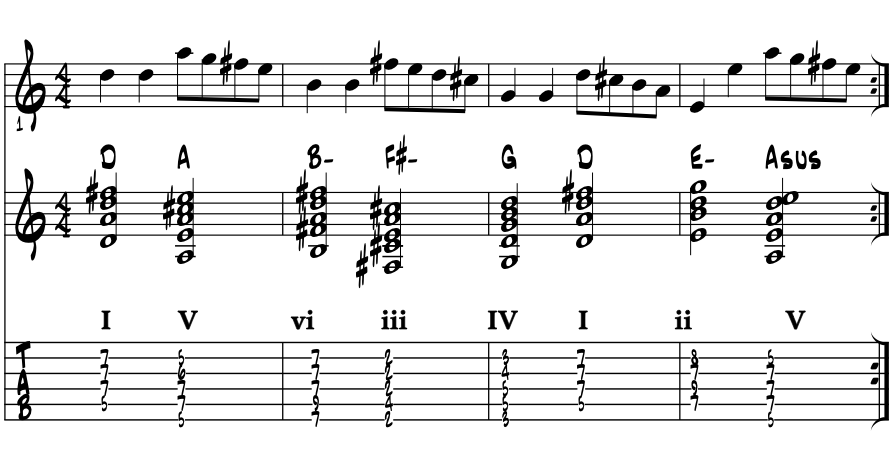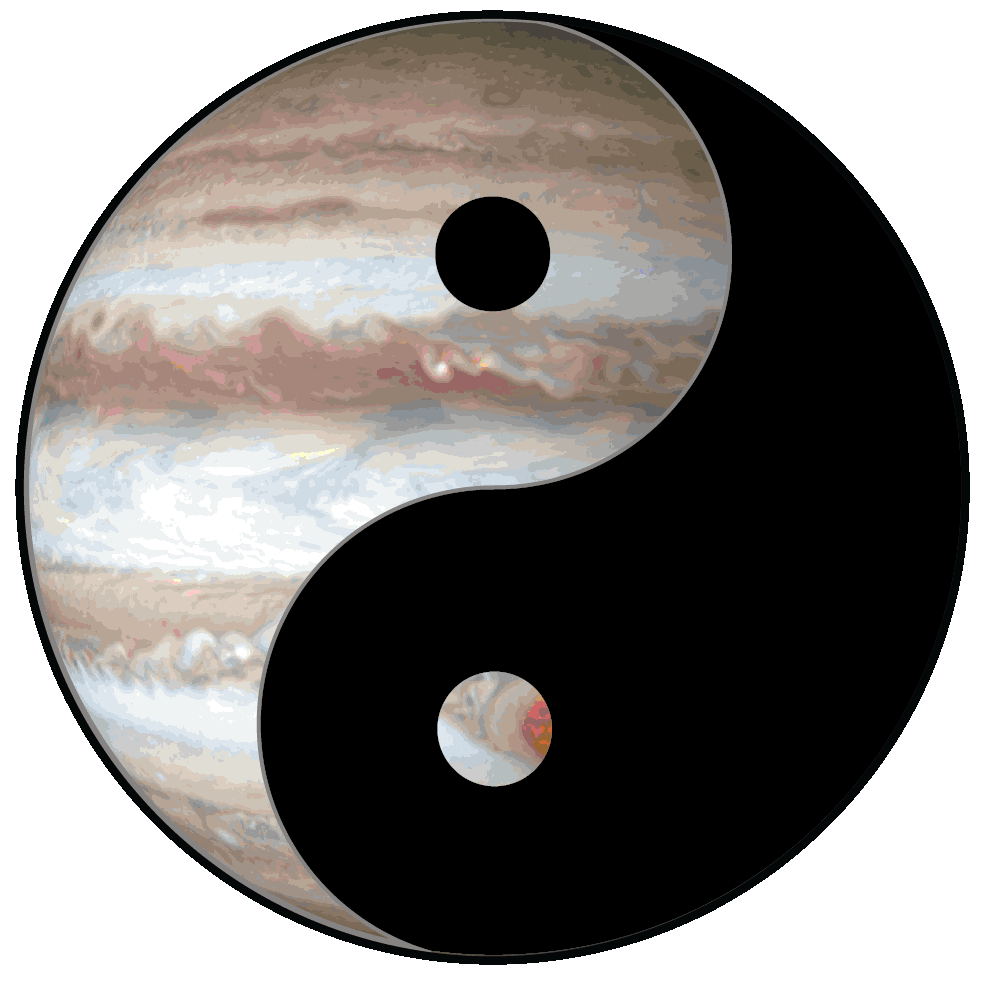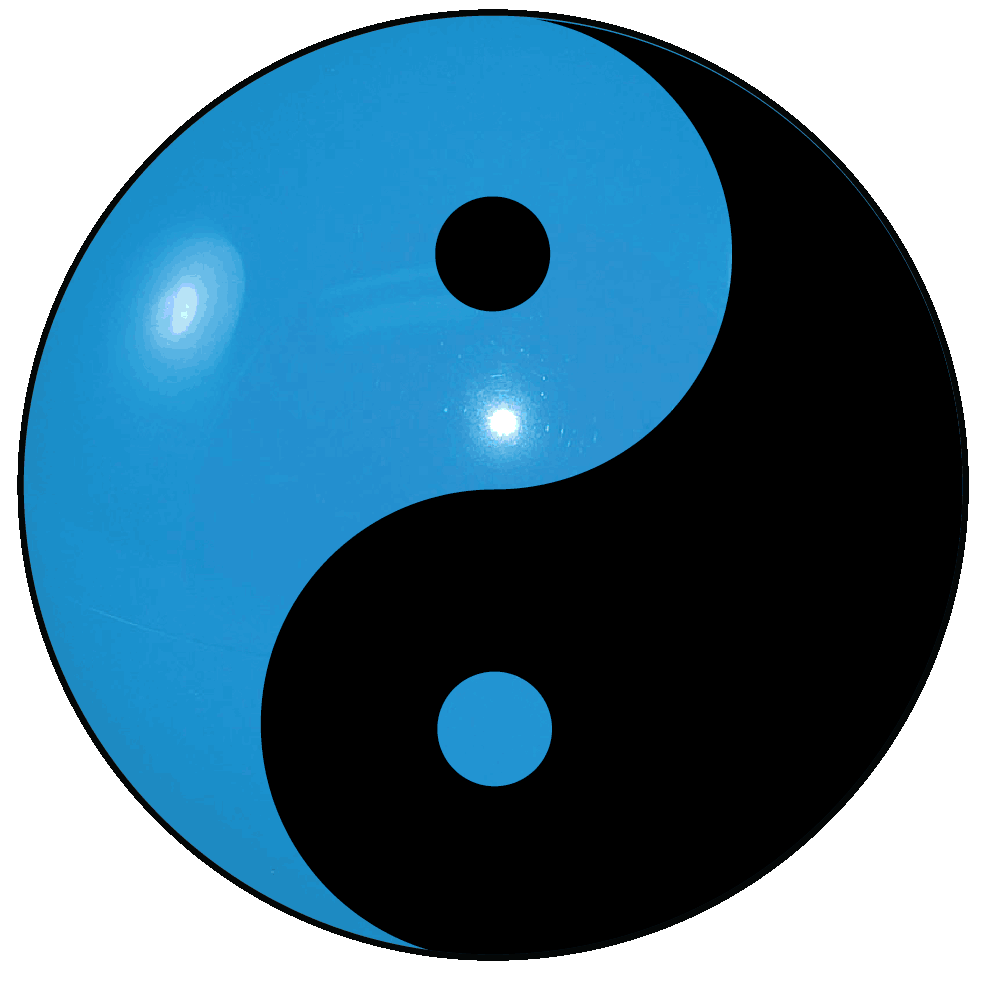. . - . . - . . - ... :)
|
“We should not permit our grievances to overshadow our opportunities.” |
wiki ~ Booker T. Washington |
In a nutshell / sequences and permutations. For some reading here, these two artistic elements, sequence and permutation, become the basis of a lifetime of musical invention, and artistic invention in general in all of the various 'arts' we love. Using our smarts, our own elevated sentient thought process, we create and recognize a series of pitches as a sequence, and devise ways to rearrange or permeate them to create new art. |
|
For improvising musicians, these two techniques become mainstays for creating our variations of whatever motifs we're given to work with, from any song or musical setting. Musical elements that are sequenced can be permutated. Improvising artists 'sift through' ideas, find their gems, and filter them through various forms and patterns. Please examine the following idea of major triads. Thinking 'C' major. Example 1. |
 |
Cool? These vocabulary / theory terms go way deeper into academia as the shedding evolves. Once the jazz frontier is crossed on the style spectrum, a whole new universe can blossom for the evolving artist. So, have you got these triads under your fingers yet ? In a couple of keys even ? That's a goal to achieve. |
|
A Baroque sequence. This next idea comes to us from a couple of hundred years ago now, from an era of stately sounding, majestic music whose composers just love to sequence a bass line, chord changes and create 'written out' orchestrations and permutations in the lead lines. Click the music. Do you by recognize this Euro 'top 10' hit from the early 1700's ? It's become a winter holiday classic, still to this very day. In this first pass we use an upper pedal for our melody. Without a key signature, thinking in 'D' major. Example 2. |
|
 |
Sound familiar? Cool. No? Well, another first :) Baroque style music and sequencing / permutation go hand in hand. Composers and players loved to sequence their ideas, mostly following along diatonic pathways. Let the melody permutations begin. First motif sequenced through the changes keeping mostly the same melody rhythm pattern. Example 2a. |
|
 |
Simply permutating the pitches of the last idea into a new melody line. Example 2b. |
 |
Simply permutating the pitches of the last idea with more a 'leap and stepwise' formula. Example 2c. |
 |
Cool ? There's a ton of ways this all can go really ... but have a sense of the process here ? Becoming a classically trained Americana improvisor ? Want to try out a few more baroque sequences ? |
A sequence.
And does a loop or sequence with music / art always have to close ... ? No, not necessarily. |
|
A permutation.
And can the permutation of the elements of a sequence evolve its elements, and retain the essence of the sequence? Absolutely. Ever hear of the blues hue ? Let's 'bluesify' the 'A' and 'D' triads thinking blues in 'A.' Example 2. |
|
New melody by ear. In this next idea we combine the above 'theory machinations' and create a motif we can organically grow into a song. Here's the motif. Ex. 3. |
 |
And here's the song. Pretty sure this was a 'break tune' some where along the way :) Example 3a. |
 |
A group of pitches / by the numbers. In our basic philosophies here, we can think of a scale or mode as a group of pitches from which we can create our melodic ideas. Thus, we can swap pitch letter names with numbers and create a way to facilitate understanding and energizing our sequences and permutations. Please examine the following numerical evolution of the pitches. Thinking 'C' major. Example 4. |
 |
Cool ? Making this leaping transition to our music / math basis of all things theory? Surely a potential giant step in understanding as we look to order up the whole tamale. |
Permutation by the numbers. If the last bit is cool, then this next idea is the potential game changer. Thinking 'C' major. Example 4a. |
 |
Cool ? So our permutation of an idea can be rhythmic too yes? U bet. Pitches, rhythms, phrasing, accents, sequencing a permutation through cycles of root pitches, chords. On and on really. And with the five note pentatonics ... no 'bad' pitches. Just like wind chimes :) Well that's all for this discussion folks. Have a sense now of the musical term 'sequence?' And how we 'permutate' the components of a sequence into new configurations? |
Ultra modern motions. As this term implies our sequencing and permutating of our melodic ideas take a definate 'cubist' dimensionally as we ally an overarching 'outside' structure to motif while moving through musical (jazz) time. We now take a few cool notes and simply sequence them through a larger structure whose own interval components are also structured. So a 'structure within a structure' if you will. While there are many ways to do this as new ideas are generated by today's modern jazz artists, included here are two; one comes from Coltrane and "Giant Steps", which historically could be a first 'break' from the preceeding diatonism of the previous decades. The second modern sequencing motion is based on the minor 3rd interval, or more succinctly its two parts; a whole step and a half step interval. These sequence / permutation ideas have a source with Coltrane's pianist McCoy Tyner, who joined Coltrane's band in 1961. The various academic combinations of these intervals enter us into the 'ultra modern motions.' So why 'ultramodern ... ? Blending sequence and permutation together, once the song starts, the chord sequence 'progresses' along to its finish, where if needed for the arrangement, it will begin again. In modern jazz stylings, there's the idea that a chord progression doesn't necessarily have to proceed in the sequence that the chords were written. So we can permutate a progression's elements. Rare for the most part, Coltrane's 'sheets of sound' styling falls under this 'permutation' of a chord progression. Though in this approach to chord substitution, and what V7b9 can bring with its multiple leading tones and working backwards to generate Two / Five cells, must be factored in. In a word; complex, in theory, performance and understanding the art. So: C7 A7 D7 G7 can be A7 G7 C7 D7 D 7 A7 C7 G7 or G7 A7 D7 C7 etc. |
|
Other modern motion options. This next modernizing option, centered on an interval pattern, finds the artist sequence / permutate and idea into a larger sequential interval and pitch shifting motion. That; any idea (motif) can be filtered through a whole step / half step pattern either ascending or descending in pitch. For example; the notes of the motif of 'G A C D' becomes; down a whole step ... up a half step G A C D / F G Bb C / Gb Ab B C# / E F# A B or to flip it over and around ... G A C D / C Bb G F / E F# A B / Bb Ab F Eb etc. These sorts of ideas cats might term 'outside', as in outside the diatonic scheme of a song's chord progression. We hear a lot of this melodic weaving from the early 1960's onward as artists took apart Coltrane's "Giant Steps" ideas and formulated a new system of modes from the pentatonic colors. Most times these sorts of lines / pitches are played very very fast so as create the 'sheets of sound' phenomena discovered by Coltrane in the mid 1950's and after, while working with both Miles Davis and Thelonius Monk. Cool ? |
|
Review. A sequence is an order of events that form a loop. A permutation is simply a re-arranged sequencing of the elements of its original loop. Artists use these two techniques to expand on their motifs, create themes and variations, call and response and the interplay found in the improvised performance formats of a lot of our Americana musics. Further sequencing and permutation studies included in this book include, the interval studies, loops of pitches, working with arpeggios, the #15 arpeggio and diatonic and non-diatonic chord progressions. |
"The one true teacher lives at the center of your heart." |
wiki ~ Sanskrit proverb |
Chanting. The art of vocal chanting goes all the way back in our cultures through all of historical time and just might be an original source of creating sequences of syllables that form into a groove, which then loops. Why, all us noble critters big and small, fur and feather, and especially feather, have their own ways of saying a thing, and repeating it, and repeating it as it becomes their own chant within their community. In chanting there's often a sequence of syllables. As we chant a phrase in time and its rhythms, it builds a momentum in time and space. These become vibrations that reach us out into the local universe. In music, our chants become notes into melodies moving through time with rhythms. We often jazz them up nowadays with a wide variety of musical sounds that enhance the chant. And just like chanting, our music has sequences; cycles of events and points of closure, consistent loops of sounds, that we form up to tell our stories. And as we imagine new loops for new stories, we mix up these elements into a new loops we theory cats call permutations. |
References. References for this page come from the included bibliography from formal music schools and the bandstand, made way easier by the folks along the way. In addition, books of classical literature; from Homer, Stendahl and Laudurie to Rand, Walker and Morrison and of today, provided additional life puzzle pieces to the musical ones, to shape the 'art' page and discussions of this book. Special thanks to PSUC musicology professor Dr. Y. Guibbory, who 40 years ago provided the initial insights of weaving the history of all the fine arts into one colossal story telling of the evolution of AmerAftroEurolatin musical arts. And to teacher-ed training master, Dr. Joyce Honeychurch of UAA, whose new ideas of education come to fruition in an e-book. |
"Life is about creating yourself." |
wiki ~ Bob Dylan |
Find an e-book mentor. Always good to have a mentor when learning about things new to us. And with music and its magics, nice to have a friend or two ask questions and collaborate with. Seek and ye shall find. Local high schools, libraries, friends and family, musicians in your home town ... just ask around, someone will know someone who knows someone about music who can help you with your studies of the musical arts with this e-book. |
Intensive tutoring. Luckily for musical artists like us, the learning dip of the 'covid years' can vanish quickly with intensive tutoring. For all disciplines; including all the sciences and the 'hands on' trade schools, that with tutoring, learning blossoms to 'catch us up.' In music ? The 'theory' of making musical art is built with just the 12 unique pitches, so easy to master with mentorship. And in 'practice ?' Luckily old school, the foundation that 'all responsibility for self betterment is ours alone.' Which in music, and same for all the arts, means to do what we really love to do ... to make music :) |
 |
"These books, and your capacity to understand them, are just the same in all places. Always bear in mind that your own resolution to succeed, is more important than any other one thing." |
|
Academia references of Alaska. And when you need university level answers to your questions and musings, and especially if you are considering a career in music and looking to continue your formal studies, begin to e-reach out to the Alaska University Music Campus communities and begin a dialogue with some of Alaska's finest resident maestros ! |
|
Formal academia references near your home. Let your fingers do the clicking to search and find the formal music academies in your own locale. |
"Who is responsible for your education ... ? |
'We energize our learning in life through natural curiosity and exploration, and in doing so, create our own pathways of discovery.' Comments or questions ? |

